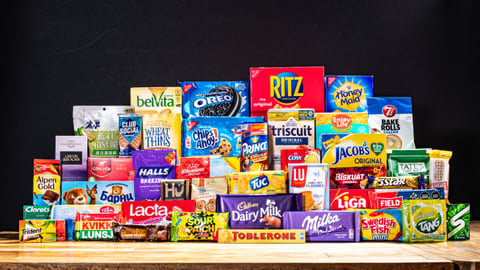Consumers buying less fresh meat, looking to produce and dairy for alternatives
Early last month, a Loblaws customer took a picture of a five-pack of chicken breasts costing $37, and posted it online. Twitter did its thing, the media picked it up and soon the country was riding a wave of anger about the skyrocketing price of meat.
Dalhousie professor Sylvain Charlesbois, one of the country’s leading experts on food and food economics, said that the photograph – and the wave of media coverage it produced – helped play a key role in shaping consumers’ perceptions of grocery prices, particularly around meat.
Largely overlooked in the subsequent furor, he said, was the fact that the picture was actually of a premium product (skinless, boneless) from Loblaws’ line of organic products, meaning the chicken was also free from hormones and antibiotics.
“It’s the noise,” said Charlesbois during a Wednesday (Feb. 15) webinar presented by data insights platform Caddle in response to a question from chief revenue officer Colleen Martin about where the consumer perception that meat prices have gone through the roof originated. “We’re impacted by what’s going on in the media.”
The “Caddle 2023 Market Outlook” presented findings from two waves of interviews with just over 3,000 Canadian grocery shoppers designed to show what kind of impact rising grocery prices have had on their shopping habits. The study’s first wave was conducted in October, followed by a second wave in January.
It found that 92% of Canadians feel that groceries cost more than they did just three months ago, while more than half said they have purchased more private label brands in response to rising prices.
Eighty per cent of respondents said they believed that meat products are more expensive, which is influencing their shopping behaviour. Nearly two-thirds (61%) of Canadians, for example, say they have reduced their meat purchases.
But Caddle’s research showed there’s a significant discrepancy between consumer perception and reality. The price increase for meat, for example, is actually fairly modest (+6%) compared to other grocery categories such as bakery (+14%), vegetables (+13.7%) and dairy products (+12%). “Right now, the meat counter is seen as a very expensive place, but the reality is that meat has been a non-story in the grand scheme of things,” said Charlesbois.
While meat sales have taken a hit, the Caddle research also found that 51% of consumers are buying more produce than they did in the previous year, and are also looking to dairy and frozen foods to offset a perceived increase in meat prices.
Higher prices are also causing consumers to seek out cost savings through private label brands, with just over 53% of Canadians saying they are buying either a little more or much more of these kinds of products.
“With most grocers I talk to, [private label] is the focus,” said Charlesbois. “You have this amazing super-cluster of innovation providing us with different, really novel products.” These products, added Martin, are expanding into premium categories such as health- and plant-based foods.
“[Y]ou’re seeing them not only creeping in, but taking over large linear and winning awards for quality, taste, value, all of those things,” she said. “It’s a really exciting time as retailers expand their product development teams.” Charlebois said that a growing number of private label brands are now winning food innovation prizes. “That’s something we didn’t see 20 years ago,” he said. “It’s really changing.”
Charlesbois also said that Nestle’s recent exit from frozen food and pizza with the decision to wind down product lines including Stouffers and Delissio presents an opportunity for manufacturers in the growing frozen category.
“There are going to be gaps in the freezer aisle, [which] is getting busier and busier because of what’s going on with food inflation,” he said. Private label products, he said, could occupy the “Nestle void.”


